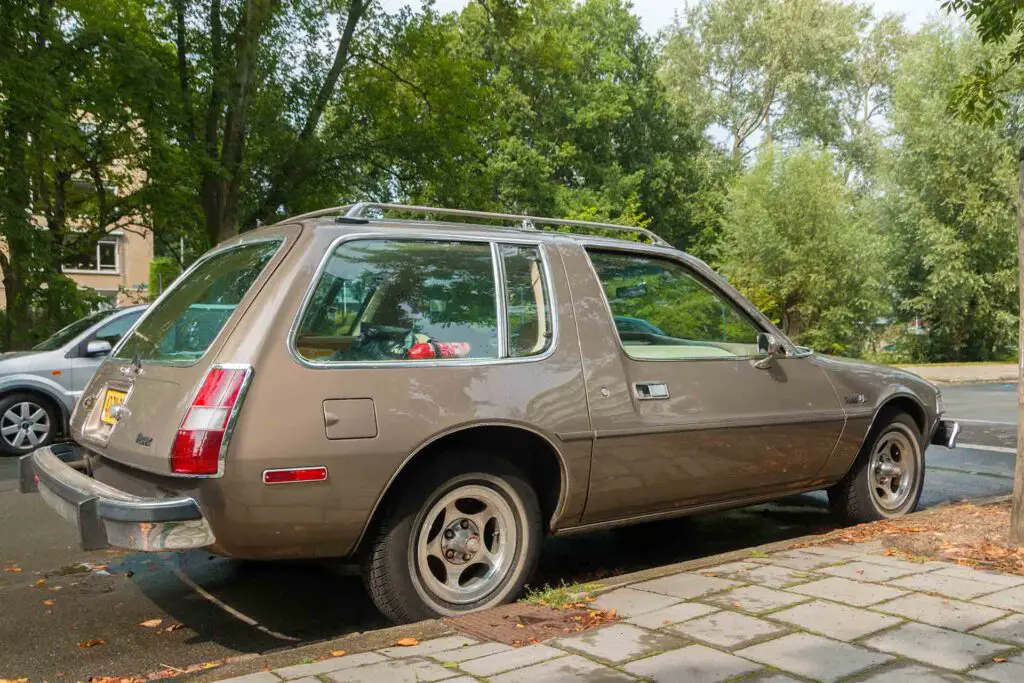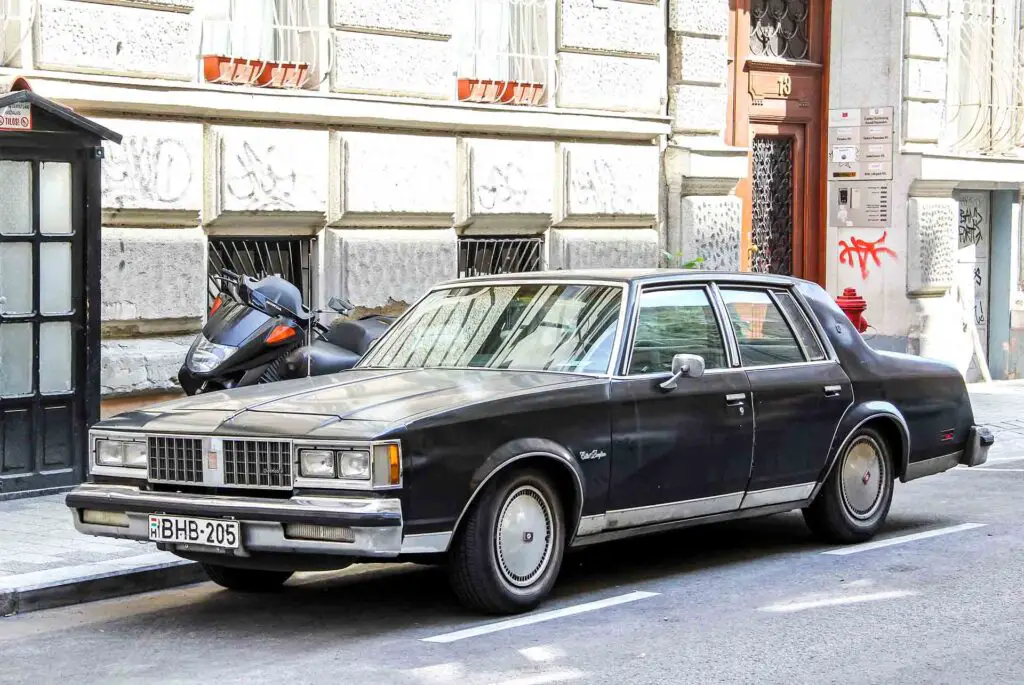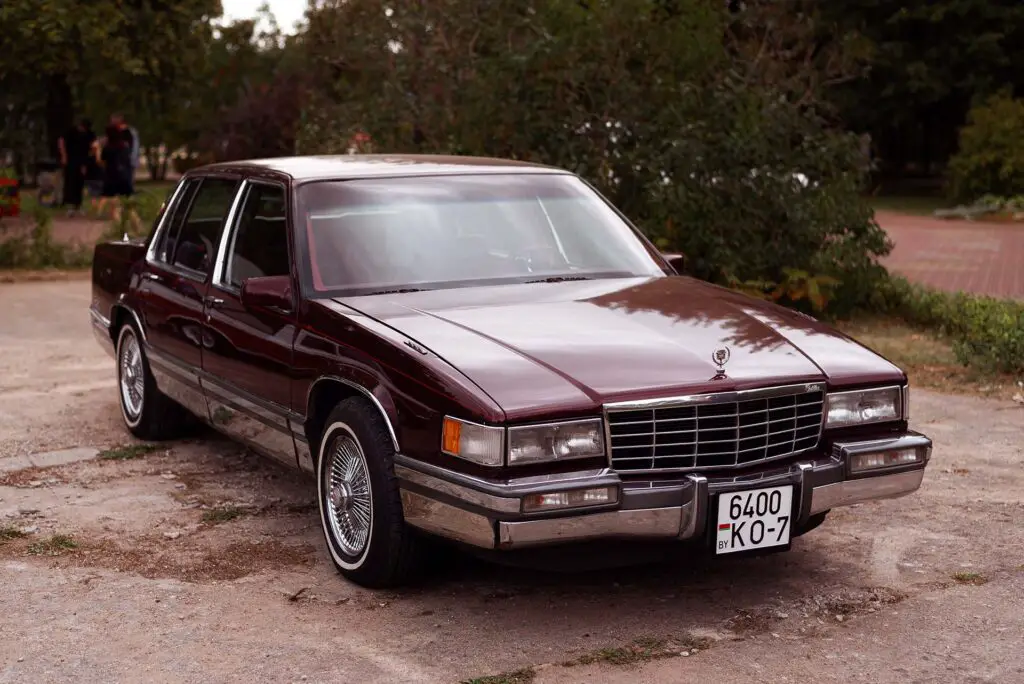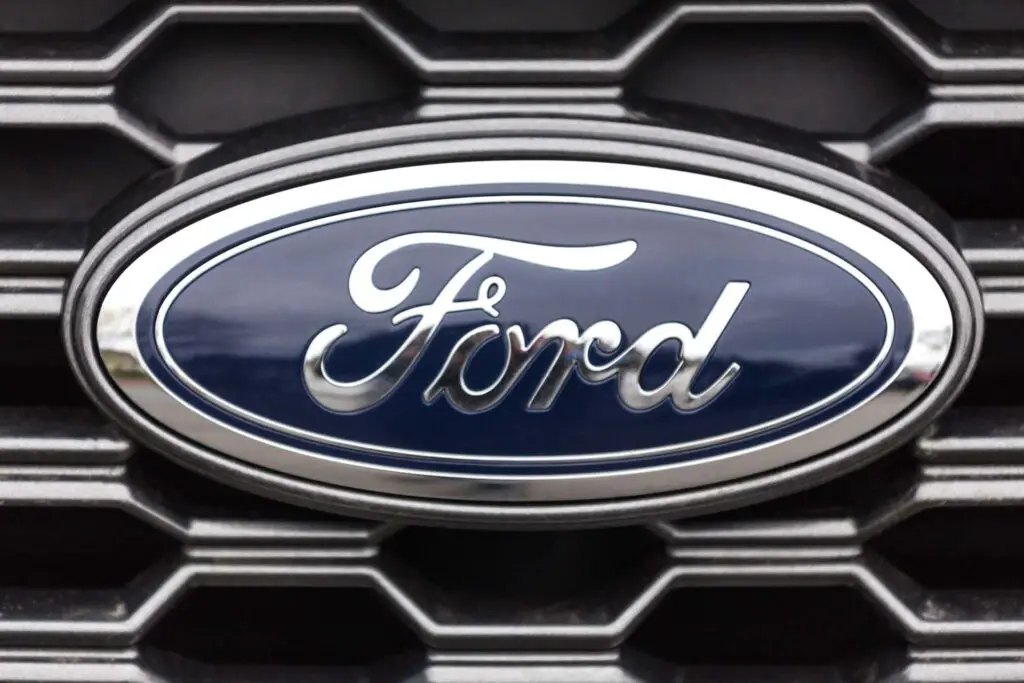If you love cars, then you’ve probably heard, at one point or another, about the worst American car ever made. The conversation usually happens between auto enthusiasts who have encountered their fair share of disappointments on the road. However, things don’t always have to be negative when it comes to talking about four-wheelers! In this post, I’ll look at the top 5 American cars that earned a special place in automotive history: as simply the worst.
Some of the worst vehicles made in the US are AMC Pacer/Gremlin, Oldsmobile Cutlass Supreme Diesel, Cadillac Cimarron, Ford Pinto, and Pontiac Aztek. Based on much research and overall customer reviews, these models are considered a catastrophic blend of design flaws, subpar performance, and an overall lackluster experience the American automotive industry has given us.
What Are the Criteria for Selection of the Worst American-Made Car Ever?
In the vast realm of American automobile history, a question that often arises is – what sets apart the worst of the worst when it comes to four-wheelers? Unearthing the answer requires a journey into the annals of automotive failures, where a convergence of ill-conceived designs, abysmal reliability, lackluster performance, and a litany of other factors culminate in the dubious distinction of being crowned the worst cars ever made in the US. That’s why answering the following questions would be more than just helpful.
Why Is It Important to Consider Reliability?
Reliability reflects the vehicle’s ability to perform consistently over time without significant mechanical issues or breakdowns. Reliability directly impacts the owner’s satisfaction and overall ownership experience. Additionally, it is important to note that car prices are influenced by various factors, including manufacturing costs, technological advancements, safety features, and market demand, contributing to the overall high prices of cars in today’s industry.
When It Comes to Safety, It’s Pretty Obvious Why It’s Important, Right?
Considering safety is of utmost importance when evaluating the worst American cars because it directly affects the well-being of drivers, passengers, and pedestrians. Safety features, crash test ratings, and overall structural integrity play a pivotal role in determining a vehicle’s worthiness. Moreover, it is essential to consider the cost of owning a car, including expenses like insurance, fuel, maintenance, and repairs, as it significantly impacts the overall financial burden and long-term affordability for car owners.
How Design and Overall Aesthetic Appearance Affect the Overall Vehicle’s Character?
It encompasses both aesthetic appeal and practicality. A poorly designed car can lead to discomfort, limited visibility, and impractical functionality. Moreover, design plays a role in defining a car’s character and its ability to stand out on famous routes in the USA, where distinctive styling and visual appeal can contribute to a memorable driving experience and capture the attention of onlookers.
Why Considering Performance Is a Must?
Performance is vital because it directly influences the driving experience and overall satisfaction of the owner. Performance encompasses factors such as acceleration, handling, braking, and fuel efficiency. A lackluster performance can lead to frustration and disappointment. Additionally, when buying a used car, it’s essential to thoroughly assess its performance history, seek professional inspections, and test drive the vehicle to ensure it meets your expectations and requirements.
How a Customer Feedback Can Be Helpful in Your Quest?
Considering customer feedback provides insights into real-world experiences and satisfaction levels of owners. Customer feedback sheds light on reliability issues, safety concerns, performance shortcomings, and overall quality.
For example, if you take into account the feedback from drivers in cities with the worst drivers, you can gain valuable information about the practicality and durability of a car in challenging driving conditions. This helps prospective buyers make informed decisions and avoid potential pitfalls when choosing a vehicle.
#1 Worst American Car Ever Made – AMC Pacer/Gremlin
The AMC Pacer and Gremlin were two notable models produced by the American Motors Corporation (AMC) during the 1970s. The Pacer, introduced in 1975, was marketed as a futuristic compact car with a unique bubble-like design, large windows, and ample interior space. However, it suffered from several major flaws, such as its weight, which impacted its performance and fuel efficiency. Additionally, the Pacer faced issues with rust, poor handling, and an underpowered engine, leading to lackluster sales and a short production run until 1980.
What Are the Customer Reviews About the AMC Pacer/Gremlin?
Customer feedback regarding the AMC Pacer and Gremlin reflected a range of experiences and opinions. While some buyers found charm in their unconventional features, many others expressed disappointment with their quality, performance, and overall driving experience.
What Kind of Impact the Vehicle Had on the Manufacturer?
Both the Pacer and Gremlin struggled to compete with their counterparts from larger automakers, and their quality issues and performance shortcomings contributed to their reputation as some of the worst American cars of their time. However, despite their flaws, they have garnered a cult following among enthusiasts who appreciate their unique designs and quirky characteristics.

#2 Worst American Car Ever Made – Oldsmobile Cutlass Supreme Diesel
The Oldsmobile Cutlass Supreme Diesel was a variant of the popular Cutlass Supreme model produced by General Motors from 1978 to 1985. It was introduced during the fuel crisis of the late 1970s as an attempt to offer a more fuel-efficient option to consumers. However, it faced significant flaws and shortcomings that ultimately tarnished its reputation.
Another notable shortcoming was the poor fuel economy achieved by the Cutlass Supreme Diesel. While the vehicle was marketed as a fuel-efficient option, the diesel engine’s inherent inefficiencies, coupled with the additional weight of emission control devices, resulted in disappointing mileage figures. This undermined the primary reason for choosing a diesel-powered vehicle in the first place.
What Customers Have to Say About Oldsmobile Cutlass Supreme Diesel?
Customers’ opinions about the Oldsmobile Cutlass Supreme Diesel were overwhelmingly negative. Many owners expressed frustration and disappointment due to the numerous issues and shortcomings of the vehicle.
One of the most common complaints from customers was the unreliability of the diesel engine. Many experienced frequent breakdowns, engine failures, and costly repairs. The engine’s poor durability, including head gasket failures and cracked blocks, left owners with significant repair bills and considerable downtime.
Check the Overall Impact This Model Has Left on the Manufacturer
The negative reputation and numerous issues faced by Cutlass Supreme Diesel led to a significant decline in sales and ultimately contributed to the discontinuation of the model in 1985. The engine’s shortcomings and reliability concerns cast a long shadow over the Cutlass Supreme Diesel, earning it a place among the infamous examples of failed attempts to capitalize on the fuel crisis with diesel-powered vehicles.

#3 Worst American Car Ever Made – Cadillac Cimarron
The Cadillac Cimarron, produced by GM from 1981 to 1988, holds a notorious place in automotive history as a symbol of badge engineering and a lack of genuine luxury. It was positioned as a compact luxury car, but its production and numerous flaws contributed to its reputation as one of Cadillac’s biggest missteps.
The Cimarron was essentially a rebadged version of the Chevrolet Cavalier, a much cheaper and less prestigious vehicle. This badge engineering approach led to one of its major shortcomings: a lack of true luxury features and refinement expected from a Cadillac. The interior quality, materials, and craftsmanship fell short of Cadillac’s reputation, resulting in disappointment for customers seeking a true luxury experience.
How Did the Final Users Find the Cadillac Cimarron?
One common complaint was the lack of genuine luxury features and craftsmanship. Customers felt that the interior quality and materials did not meet the standards expected from a Cadillac. The Cimarron’s interior was often criticized for feeling cheap and lacking the upscale feel associated with luxury vehicles.
Did Cadillac Have Some Major Issues Manufacturing This Model?
The Cimarron’s reputation suffered from its association with the term “Cimarronization,” which became synonymous with the practice of slapping a luxury badge on an inferior vehicle. It became a symbol of GM’s misjudgment in trying to cater to a perceived demand for a compact luxury car without truly delivering on the expectations of Cadillac customers.
Due to its negative reception and sales performance, the Cadillac Cimarron was discontinued in 1988. Its legacy serves as a cautionary tale in the automotive industry, reminding manufacturers of the importance of maintaining brand integrity and delivering genuine luxury and quality to customers.

#4 Worst American Car Ever Made – Ford Pinto
The Ford Pinto was a compact car produced by the Ford Motor Company from 1971 to 1980. While it gained popularity as an affordable and fuel-efficient option, it became infamous for its major flaws and safety shortcomings.
The Ford Pinto’s history serves as a cautionary tale about the importance of prioritizing safety and ethical decision-making in the design and production of automobiles. It stands as a lasting reminder of the consequences that can arise when a vehicle’s flaws and shortcomings compromise consumer safety.
What Customers Truly Had to Say About the Legendary Pinto?
Despite these negative aspects, it’s important to note that Pinto did have a significant customer base that appreciated its affordability and fuel efficiency. Some customers were satisfied with the car’s overall value for money and its ability to meet their basic transportation needs.
However, the overwhelmingly negative feedback regarding safety, reliability, and performance ultimately overshadowed any positive sentiments about the Ford Pinto. The controversies and safety concerns associated with the model led to a tarnished reputation and a decline in sales. The Ford Pinto remains a controversial and infamous vehicle in automotive history.
Has This Model Ignited a Revolution for Its Manufacturer or Not?
The negative reputation and safety concerns surrounding the Ford Pinto led to a significant decline in sales and tarnished the image of the vehicle. The controversy and legal battles surrounding Pinto’s safety flaws resulted in landmark cases and ultimately led to stricter safety regulations and reforms in the automotive industry.

#5 Worst American Car Ever Made – Pontiac Aztek
The Pontiac Aztek was a crossover SUV produced by General Motors under the Pontiac brand from 2001 to 2005. Despite attempts to position it as an innovative and versatile vehicle, the Aztek suffered from major flaws and shortcomings that contributed to its negative reputation.
Aztek’s unconventional and polarizing design was one of its most prominent shortcomings. Its exterior styling, characterized by a boxy shape, clashing lines, and plastic body cladding, received widespread criticism for its unattractiveness and awkward proportions. The design failed to resonate with consumers and was often mocked for its unconventional appearance.
Another major flaw was the limited cargo space and poor practicality, despite being marketed as a versatile and adventure-oriented vehicle. The Aztek’s interior storage options were deemed insufficient, and the vehicle lacked the flexibility and functionality expected from a crossover SUV.
Most Customers Had Not So Pleasant Comments on Pontiac Aztek
Customers’ opinions about the Pontiac Aztek were largely negative, with many expressing dissatisfaction and disappointment with various aspects of the vehicle. The most common complaint among customers was Aztek’s unconventional and polarizing design.
Many found the exterior styling to be unattractive and awkward, with the boxy shape, clashing lines, and plastic body cladding drawing particular criticism. The design was often described as strange and off-putting, making it a significant factor in turning potential buyers away from the vehicle.
Did the Manufacturer Make Some Profit?
The combination of these flaws, along with a high starting price, led to slow sales and the eventual discontinuation of the Pontiac Aztek in 2005. However, it is worth noting that the Aztek has gained a small cult following in recent years, partly due to its appearances in popular television shows, but its initial reception and reputation remain largely negative in the automotive world.

Learn What Is the Worst American Car Ever Made and Just Don’t Buy It
It’s safe now to say that you should be extra cautious when buying a car (and not only because of potential scams). While there are plenty of viable options from reliable manufacturers – all thanks to the evolution of four-wheelers, it’s important to do your research and make sure you aren’t investing in something that could potentially break down. Who knows – maybe one day someone will create a time machine and give us a chance to go back in time and warn people about these historically bad vehicles, but until then, we’ll have to hold onto our wallets tightly and make wise purchasing decisions.








